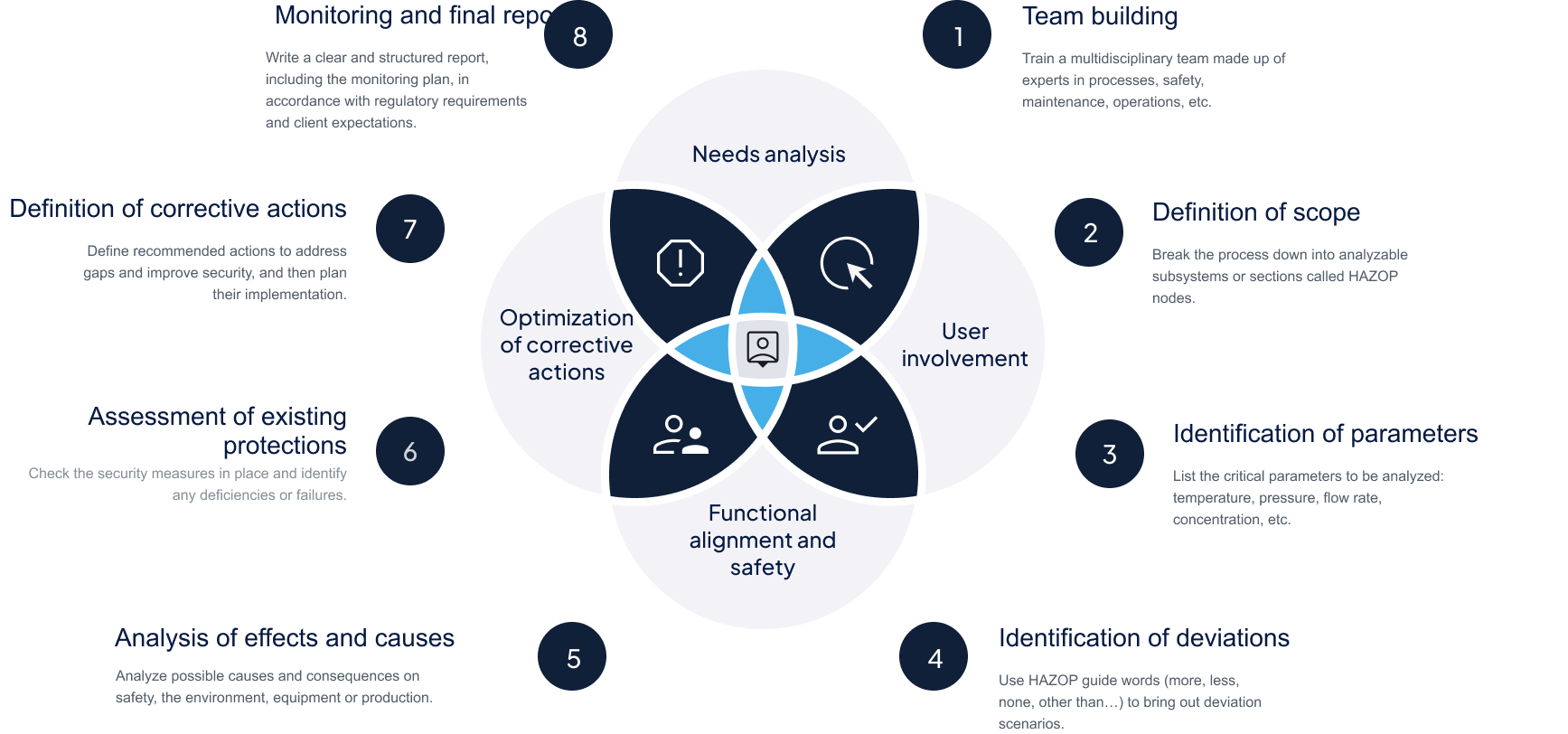Login

Risk analysis
The HAZOP method (Hazard and Operability Study) is one of the most widely used approaches for assessing operational risks in complex industrial processes. It is based on a structured analysis of deviations in operating parameters that could lead to hazardous situations or performance losses.
With a HAZOP study, you benefit from:
numtech expertise

Process

Process

use case
We conduct HAZOP studies for a wide range of industrial processes. Our services notably cover the following sectors:
Each assignment is tailored to the specific features of your facilities and aims to enhance the safety, reliability, and regulatory compliance of your processes.

























F. A. Q

|
|
|